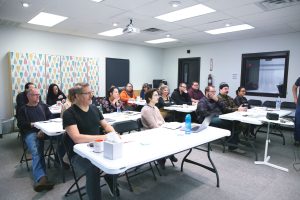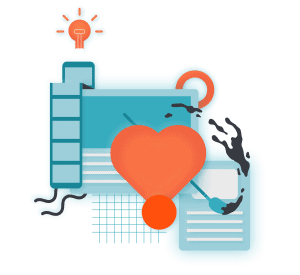Learn How to Reduce Digital Fatigue, Distrust, and Distractions Among Virtual Employees
Loneliness, distraction, long working hours, digital fatigue, and trust issues have been common for remote employees throughout the Coronavirus pandemic. These challenges can be compounded when your team has no training solutions. It is vital that managers explore ways to help remote workers effectively manage these growing challenges.
Many organizations turn to mindfulness as a powerful tool to reenergize their workforce.

“Mindfulness moderates the effects of the negative appraisal of the workload on both emotional exhaustion and depersonalization; as mindfulness increases, the positive relationship between workload stress appraisal and burnout decreases, or stop being significant.”1
Mindfulness techniques are proven to reduce burnout, leading to enhanced organizational performance via increased employee health, reduced absenteeism, and reduced turnover2. Employees that face such heightened work-from-home challenges often benefit from the practice of mindfulness. Keep reading to learn my top three mindfulness techniques to prevent and address employee burnout!
Technique 1: Anchoring
Even the most focused workers become distracted when they are continually interrupted with pings, meetings, caregiving, political events, and anxious thoughts. It is those moments that the “anchoring” mindfulness strategy can help.
Anchoring is a mindfulness technique where we note when we feel distracted or confused in order to regain awareness. It is normal for the mind to wander into the past or leap into the future, but it is not productive. Staying in the present is the best antidote for distraction. I like to take a deep breath before I start a new task and ask myself, “What is happening now?”
The most used anchor is the breath. Some focus on the sensation of air entering the body at the nostrils while others focus on the rise and fall of the chest as they breathe. Some feel more grounded by using the sensations in the body as their anchor. The sounds in your environment can also be used as anchors. When indoors, you may find that the sound of a clock ticking or the hum of the refrigerator work for you. When using a sound, it is best to find something that is constant, so that you can focus your attention for several minutes.
If your mind wanders off, it doesn’t matter for how long, just return to your anchor and to the experience of mindfulness.
Technique 2: Body Scans
Now that work is just a few steps away, we are working long hours and sacrificing physical and mental health. Listen to your body! Checking in with your body several times a day, standing to stretch, taking walking breaks, and paying attention to your pain are great strategies for working balanced hours.

Using a body scan meditation is a good check-in for your mind and body. Here’s a simple meditation to try:
- Set aside a time and a place in your day where you can sit comfortably and will not be distracted or disturbed.
- Find a comfortable but attentive seated position, close your eyes, and bring your attention to your toes.
- Working up from your toes, bring awareness to each body part: your feet, ankles, calves, knees, and all the way up to your head.
- Pay particular attention to any part of the body where you feel discomfort or tension. Acknowledge the sensation and breathe through the discomfort, inviting softness and openness to your body.
- Having scanned the entire body, you are able to move from a place of tension to one of openness and attention.
Technique 3: Authentically Connecting on Calls
More workers are becoming aware of digital fatigue, which happens among the balancing act of numerous digital tools and apps during the workday. Taking a moment to authentically connect with the person on the other side of a video call is another way to break up digital fatigue. Bringing the personal element back into our work lives with the chit-chat that would have happened naturally in the workplace can invigorate your workday and decrease digital fatigue.

Working from home is like the biggest of all trust falls. To lower reactivity and raise responsiveness we can all check in often, overcommunicate expectations and practice active listening. Again, “what is happening now?” If managers and workers show up asking this essential question, we bring our awareness our work and to the people behind the work.
Transform Your Remote Workforce
Are you or your team facing these challenges? AMP Creative builds custom eLearning solutions for businesses looking to empower their employees through mindfulness strategies.
Learn more about how AMP Creative can help your people thrive.
















